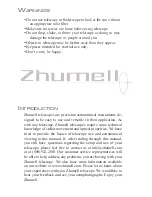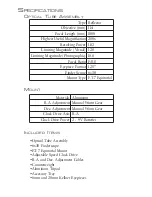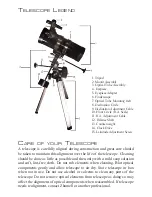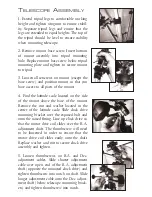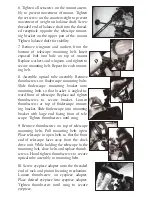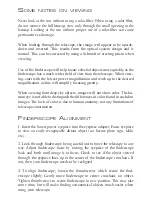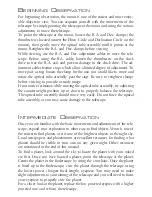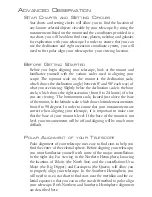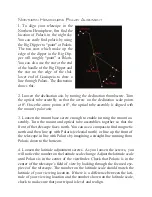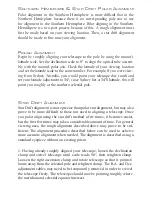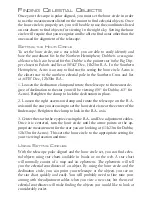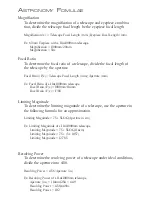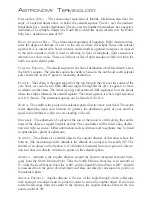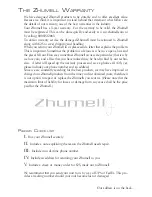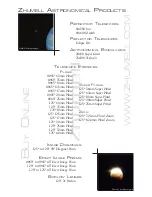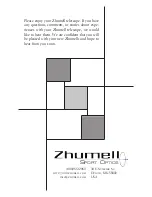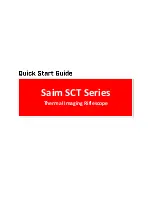
U
SING
THE
C
LOCK
D
RIVE
The clock drive included with your telescope is designed to track the move-
ment of stars. It will help keep stars in your field of view during long periods
of viewing as long as the telescope is properly polar aligned and the clock
drive is properly used. Do not be alarmed if you turn on the clock drive and
do not see the telescope moving. Stars appear to move very slowly and the
telescope may not apear to move over a short period of time. To see if your
clock drive is working, aim the telescope at a stationary terrestrial object
and engage the clock drive. Let the clock drive run for 10 to 15 minutes. If
the object you had originally aimed the telescope at appears to have moved
when looking through the eyepiece of the telescope, the clock drive is work-
ing.
C
LOCK
D
RIVE
S
ETTINGS
The clock drive features two controls which can be set depending on your
viewing location. The N-S switch is the hemisphere setting. If you are us-
ing the telescope in the Northern Hemisphere, the switch should be set to
N, in the Southern Hemisphere, the switch should be set to S. The speed
setting should be adjusted while viewing to help keep stars centered in the
field of view. You may have to increase or decrease your speed setting if
stars appear to drift in your field of view. You will need to adjust the clock
drive based on what you are looking at while viewing. As a general rule,
the farther away from the celestial pole (closer to the horizon) an object that
you are viewing is, the faster it will appear to move and the faster the clock
drive speed will need to be set.
M
ANUAL
A
DJUSTMENT
WITH
C
LOCK
D
RIVE
The clock drive included with your telescope should only be used to follow
stars. When you would like to point your telescope at a different celestial
object, you must disengage the clock drive. By loosening the thumbscrew
on the clock drive R.A. axis, you will disengage the clock drive, protecting
the clock drive and making manual adjustment easier. Manually adjusting
the R.A. axis with the clock drive engaged may cause the coil which at-
taches to the R.A. axis to bend, compromising the operation of the clock
drive. When you would like to reengage the clock drive, simply tighten the
thumbscrew and turn the clock drive on to begin tracking stars.
Summary of Contents for ECLIPSE 114
Page 1: ...ECLIPSE 1 1 4...


